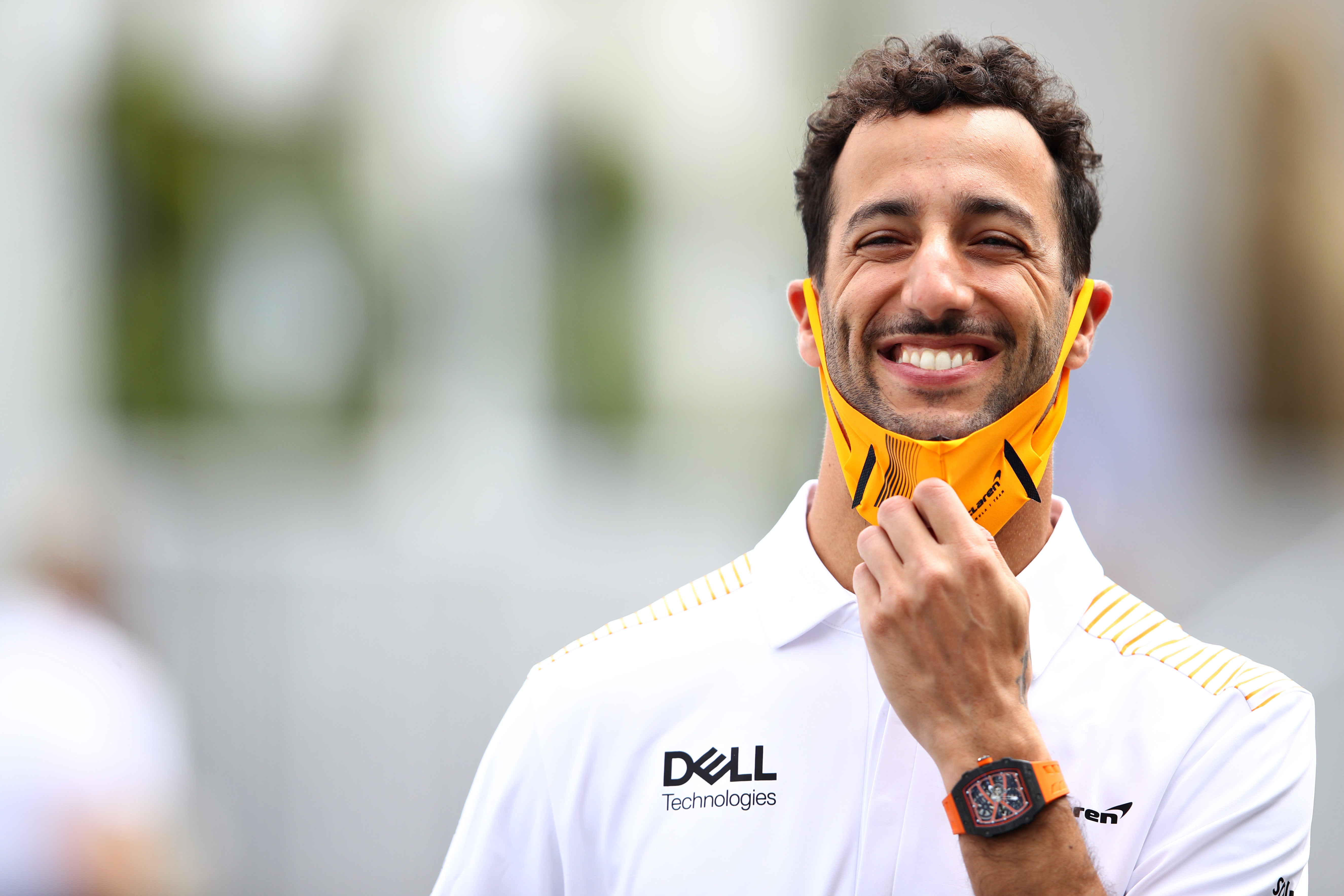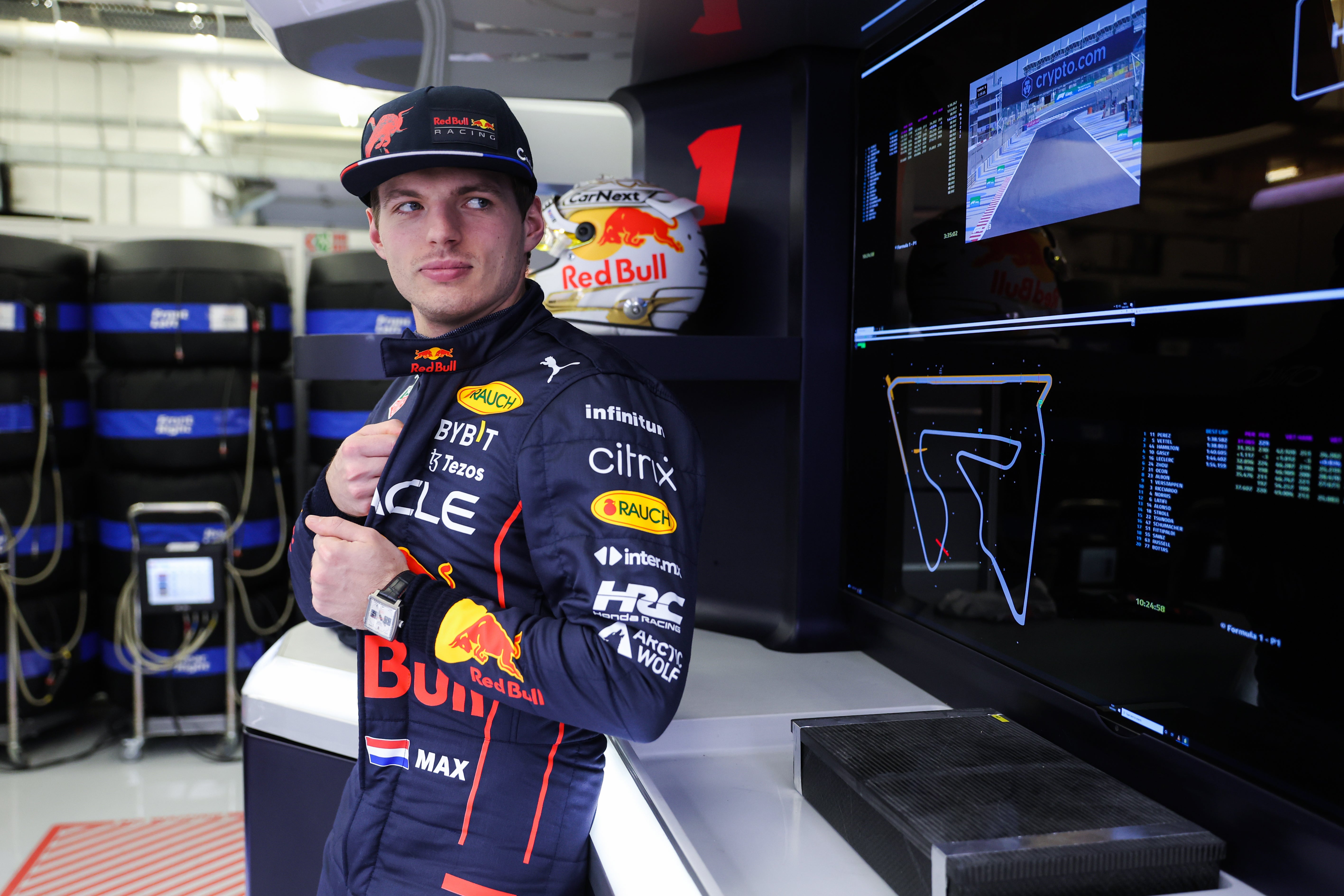‘The last two episodes are really punchy’: Inside the dramatic world of Drive to Survive
As season four of Drive To Survive prepares to go live on Netflix to the masses this weekend, one thing is for sure: it will be the most successful season to date
Your support helps us to tell the story
From reproductive rights to climate change to Big Tech, The Independent is on the ground when the story is developing. Whether it's investigating the financials of Elon Musk's pro-Trump PAC or producing our latest documentary, 'The A Word', which shines a light on the American women fighting for reproductive rights, we know how important it is to parse out the facts from the messaging.
At such a critical moment in US history, we need reporters on the ground. Your donation allows us to keep sending journalists to speak to both sides of the story.
The Independent is trusted by Americans across the entire political spectrum. And unlike many other quality news outlets, we choose not to lock Americans out of our reporting and analysis with paywalls. We believe quality journalism should be available to everyone, paid for by those who can afford it.
Your support makes all the difference.“The last two episodes are really punchy,” muses James Gay-Rees, one of the minds behind Netflix hit Drive To Survive. “I’m sure people will say we should have put this in or should have put that in,” adds Paul Martin, fellow executive producer at Box To Box films, wry smiles across both their faces. “But I suppose they do about all episodes.”
Perhaps. After all, aren’t we all critics in front of a screen? But as season four of Drive To Survive prepares to go live on Netflix to the masses this weekend, one thing is for sure: it will be the most successful season to date.
The certainty comes from the subject matter: a thrilling 2021 Championship season that went down to the wire in Abu Dhabi. The challenger Max Verstappen pipped the established veteran Lewis Hamilton to the 22nd and most coveted chequered flag on the very last lap. No doubt viewing records would have been broken had they simply churned out a series of highlight reels of this tussle at the sharp end of Formula One across these newest 10 episodes.
But that isn’t what Drive To Survive set out to be, or indeed what it has become. The charm of the show was its colour around the edges. The support acts given their own stage, the other tales just as rich in spirit and sentiment that too often fall by the wayside. Retaining all that had never been more challenging because of what was happening at the front of the grid. However, after leaving the editing suite with all 10 in the can sometime after Christmas, Gay-Rees and Martin sit comfortable and satisfied on a final product to savour. Another engrossing instalment boxed off. Another march forward for an entity at the vanguard of sports entertainment.
The story of Drive To Survive’s revamping of Formula One is well-told. Since the first season charting the 2018 championship, it has helped the sport expand beyond its original horizons, broadening its reach into previously uncrackable markets like the United States. All by bringing personalities out from under the helmet.
The original idea was a behind-the-scenes documentary series exclusively with Red Bull. Gay-Rees and other Box To Box colleagues bumped into some Red Bull executives at an industry event and floated the idea to them. After workshopping the idea with their media team, they approached Formula One who informed them that not only was it a good idea, but they had begun planning on a similar project featuring all teams. “It was good timing,” says Gay-Rees.
Making Senna gave Gay-Rees and Martin something of a crash course in the whims and relationships Formula One cultivates. But it was only when they were on the ground, they grasped the potential of this project.
“Oh right,” thought Gay-Rees during one of his first visits to a thronging paddock. “So they’re all next door to each other in a row. They’ve all worked for each other. He was fired by them, they’ve jumped ship.”
“It’s like a soap opera set,” beams Martin. “The paddock is the Queen Vic - you know where your characters are going to be and where and how they are going to interact.”
When production began, they decided against a more tactile route, leaning into the apprehension that greeted them when they first arrived “on set” at 2018’s Melbourne Grand Prix. Broadcasters like Sky Sports and Channel Four had already been assimilated as part of the background, but “the guys from Netflix”, as they were referred to around the tracks, stood out on principal. They were there to tell different stories.
That changed during the pandemic. Tighter restrictions meant production directors, camera operators and assistants had to become part of the respective bubbles, donning the necessary team stash, accelerating familiarity which only benefitted the end product.
But trust has never really been an issue to overcome. Formula One were already receptive to the idea before it was first broached and the teams followed suit, with all onboard by season two. Those involved in the sport are in it for the long haul and the use of the same production staff has cultivated a reliable level of confidence.
“We’ve had the same team working on it since day one,” says Gay-Rees, “so everyone knows the major players in the paddock. You kind of hear the whispers: which teams up, which teams down.”
As such, the main characters have been consistent. Red Bull team principal Christian Horner - “a great ally to the show from day one” – remains prominent, and commands most of the spotlight. Whether firing off shotguns, running through open fields or more personal moments on horseback with his wife and former Spice Girl Geri Halliwell. “We’re not making the Kardashians,” jokes Martin. “We produce with a really small “p” and that is Christian’s life! He’s married to Geri, they ride horses, they live in a beautiful house. All that stuff. That’s really who he is and I think that’s why people responded to him.”
Daniel Ricciardo, now at McLaren, is another who has played ball from the start. Indeed the Australian, one of the most natural drivers on the circuit, has seen his cult following swell over the last four years because of his openness in front of the cameras.

“I think with Danny particularly in season one, he was going through a major decision with his life. It helped him articulate his side of that story. He definitely got a lot out of being able to show people he just needed to make a change, for whatever reason. He wanted to get out of Red Bull, he wanted to make a change. But it wasn’t all about the money, it was about where he was in his life. And they got a lot out of showing that side of it.”
Ahead of the 2021 season, Ricciardo was highlighted as a key storyline following a move from Renault. While Drive To Survive have a crew at every meet, finite resources mean they have to make choices on how big a crew they take to certain destinations, consulting after each race to see what they have and what they need to focus on next. However, Ricciardo struggles in his new car was one of many occasions when the producers needed to call on their dexterity.
“Danny Ric’s situation was a great example,” explains Gay-Rees. “He goes to McLaren, you think he’s going to be great, then he really struggles. Then actually he nails it. All the while, you've got to respond to things in a nimble way. We shape-shift a little bit: ‘right, pull a crew off that and stick him over there because that’s where the action’s going to be’.”
“There’s always drama,” says Martin. “With a team like Haas, for instance, it’s like – pick a day, pick a story.”
Perhaps the most fascinating aspect to such access and candour has been an emotional responsibility bestowed upon those on the other side of the camera. Nothing underlined that more than during Season Three when Pierre Gasly opened up about the passing of childhood friend Anthoine Hubert, who fatally crashed during a Formula 2 race in August 2019 at the age of 22.
It is a tough yet compelling watch. Gasly is composed as he talks about Hubert amid shots of him laying flowers at the barrier of the Circuit de Spa-Francorchamps in Belgium where the collision took place. Gasly reveals Hubert sent him a message after being moved on from Red Bull: “Prove everyone wrong and show them your skills and talent”. The Frenchman went on to finish eighth in the Grand Prix on the same track, dedicating his performance to Hubert.
Following the filming, Gasly thanked the crew for allowing his catharsis, for offering him the forum to articulate his thoughts at his pace. Something that might not have been afforded to him in a press conference or other media interviews, where the immediate turnaround may have distorted his words.
“That trust, in any shape or form in documentary, is important,” reveals Gay-Rees. “You want the access to be authentic. You want the interaction to be real and you don’t want them to position themselves differently or misrepresenting themselves for the sake of the camera. So it’s a tricky balancing act because I think people to do respond to the authenticity of the show.
“You’ve got a lot of people who are underperforming, questioning their methodology, wondering what it’s all about. It just comes down to the fundamental that sport is a fantastic human endeavour and there’s so much more to it than meets the eye. And I think that’s why the show works because people go, ‘wow, I didn’t realise Formula 1 drivers were like that’. You’ve got to make it relatable otherwise nobody gives a s***.”

There may still be a week to go before the 2022 season kicks off, but planning season five has already begun. Partly because it never stops. Even before last year’s frenetic finale at Abu Dhabi, the storyboard was already filling up with ideas based on industry gossip on new drivers, new teams, which drivers could rise and, of course, who might fall. The continuous running of scenarios never ceases, nor does discussion on how to make the show bigger and better.
One area floated by The Independent is finally cracking Verstappen. The defending champion has publicly derided the show for over-dramatising. “The problem is they will always position you in a way they want,” said the Dutchman back in October. “So whatever you say they will try to make you look reckless, or whatever fits the story of the series.”
It’s a claim Gay-Rees and Martin have long refuted. But they get it from Verstappen’s point of view and have no immediate aims to change his mind. For good reason.
“The access is good but it’s challenging because they’ve got bigger jobs,” admits Martin. “They’ve got races to win. Some people interact more with it in season one, then they don’t in season two but come back in season three. They’ve all got bigger fish to fry. I think Max was so focused on the job he had to do last year that I’m not surprised he didn’t want other distractions.”
That last point is one Gay-Rees hammers home: “I think the whole Max thing is a storm in a teacup. He’s in the show quite a lot because we film his team.
“But you have to respect Max’s focus, and I’m happy it paid off. We have seen up close what Formula One demands of its drivers. That’s what it takes to beat Lewis.”




Join our commenting forum
Join thought-provoking conversations, follow other Independent readers and see their replies
Comments